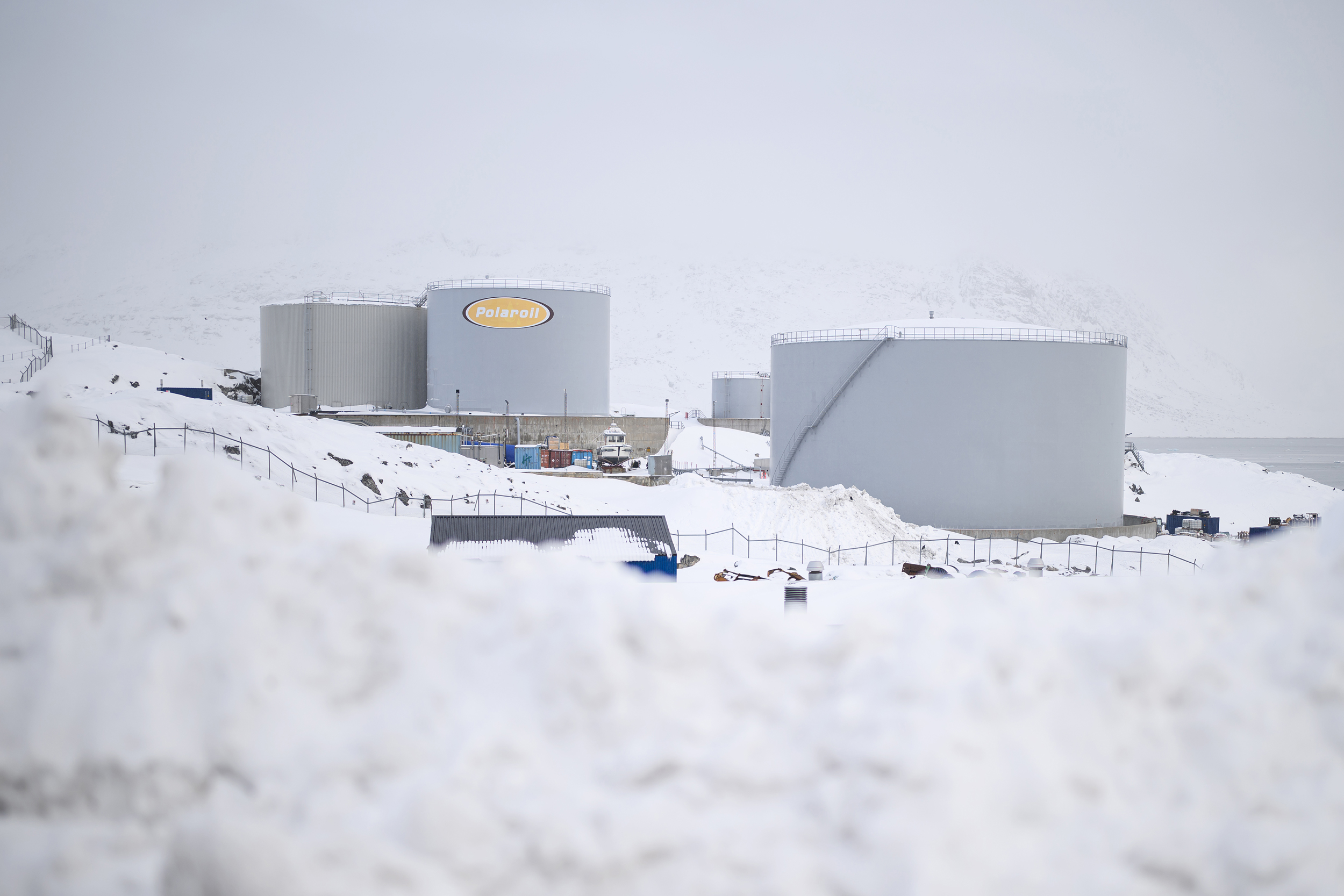The growth of customer-owned solar and batteries can help to reduce wear and tear on the grid and save ratepayers money.
How much money? A new paper from University of Texas at Austin researchers shows savings of about 40 percent.
The lead author, Nick Laws, has experience translating his area of research into terms that regular people can understand. If he’s at a backyard picnic, he said, he’ll begin by pointing at overhead power lines.
“If you look at these wires and poles around us, they’re actually, in most cases, very old,” he said. “A lot of times the hardware on the grid is near the end of life.”
We’re hiring!
Please take a look at the new openings in our newsroom.
See jobs
The paper is the culmination of his doctoral dissertation, completed in December, about extending the life of grid hardware by reducing the stress caused by periods of high electricity demand and long-term growth in demand. He and his colleagues looked at how best to encourage companies and individuals to invest in energy systems that help to diminish demand on the grid.
The utility-speak term for these systems is “non-wires alternatives,” which can include rooftop solar, community solar and battery storage.
It also includes electric vehicle charging systems, but only if the equipment is connected to the grid in a way that allows a grid operator to pause charging or draw electricity from the car’s batteries at times of high demand.
Another important resource is demand response, which usually applies to factories and other major electricity users who agree to reduce their power use at times of high demand.
Laws’ paper simulates the effects of electricity demand on a neighborhood-size part of the grid over 20 years.
His model found that the costs of providing electricity would be $7.2 million per year if there was no battery storage or other customer-owned resources to reduce demand. This takes into account many variables, including high market prices of electricity during times of strong demand and the need to buy new equipment such as wires and transformers.
Next, he looked at the costs if there were optimal incentives to get households and businesses to invest in demand-reducing tools. He estimated the costs, including the incentives, at about $4.2 million per year.
The savings, which would be passed on to consumers through their utility bills, is about $3 million, which is about 40 percent.
“It lowers the cost for everybody,” Laws said.
I want to call attention to my use of the term “optimal incentives” above because that’s a vital part of the analysis. Much of the paper considers how to calculate incentives, which would involve the utility or grid operator paying customers for using equipment that reduces electricity demand. The price would vary based on how valuable that reduction is.
As I read the paper, one question I had was what the findings mean for rooftop solar net metering—policies that pay solar owners for excess electricity they send back to the grid. The short answer is “it’s complicated.” The paper affirms the high value of customer-owned resources for the grid, but its scope is broader than just rooftop solar and it doesn’t get into state net metering policies at all.

Laws is now a power systems engineer for Camus Energy, a California-based consulting firm that does work related to easing the shift to renewable energy and managing the grid.
His co-authors are longtime faculty members from the University of Texas at Austin: Michael Webber and Maggie Chen, both of whom hold endowed chairs in engineering.
“This work is important because it quantitatively affirms something distribution grid operators have known anecdotally for years,” Webber said in an email.
That something is how batteries and other local resources can save money for the grid by prolonging the life of equipment such as transformers.
“This result also means it can relieve some pressure on the supply chain backlog for power equipment, thus allowing the supply chain to serve more pressing needs related to expanding and modernizing the grid,” Webber said.
Plenty of others have written about how customer-owned energy resources can reduce costs for everyone if deployed in the right places. One example is a 2021 report from Lawrence Berkeley National Laboratory, which does a good job of cutting through the complexity of the subject.
Laws’ paper expands upon previous research by quantifying the savings and coming up with a framework for determining how much to compensate people for reducing their demand.
An observer may look at the possibility of 40 percent savings and ask why utilities and grid operators aren’t investing heavily in incentives to maximize the benefits.
The disappointing answer is that the utility business model doesn’t deal well with tools that reduce demand, largely because utilities make money by selling electricity and building infrastructure. The Federal Energy Regulatory Commission and regulators in some states have taken steps to encourage or require utilities and grid operators to work better with customer-owned resources.
This story is funded by readers like you.
Our nonprofit newsroom provides award-winning climate coverage free of charge and advertising. We rely on donations from readers like you to keep going. Please donate now to support our work.
Donate Now
So far, those efforts have not amounted to much.
I asked Laws what should be done.
“I believe that distribution utilities need to be more proactive in identifying the problem areas in their grids that can benefit from non-wires alternatives,” he said. “However, most distribution utilities do not have the tools to identify these areas, nor do they have the budget to develop the necessary tools.”
The solution—which is no small feat—is to change how utilities are funded “to align their economic incentives with providing cleaner and more affordable energy,” he said.
Other stories about the energy transition to take note of this week:
Volkswagen Invests $5 Billion in Rivian as Part of a Technology-Sharing Partnership: In a move that caught many people by surprise, Volkswagen and Rivian announced a team-up in which the German automotive giant will invest $5 billion in the U.S.-based maker of electric trucks and the companies will form a joint venture to share EV architecture and software. The funding will help to pay for Rivian to develop and release its eagerly awaited R2 and R3 models, and it will allow the company to cut costs by being able to participate in bulk buying of chips and other components, as Abhirup Roy and Ben Klayman report for Reuters. The partnership also gives Volkswagen an opportunity to solve some of the problems it’s had with developing software. Investors reacted to the news on Tuesday evening with a 50 percent increase in Rivian’s share price. The alliance of Volkswagen and Rivian has the potential to alter the competitive landscape of the EV market, with Rivian gaining a key ally against rivals such as Tesla, and Volkswagen gaining new technology and expertise as it seeks to expand its EV lineup.
U.S. Tariffs Lead Volvo to Delay Debut of Compact EV: U.S. customers who are on waiting lists for the Volvo EX30 are going to need to wait a while longer. Volvo Cars USA has said it is delaying the U.S. release of the electric vehicle, a compact SUV, until 2025 because of the Biden administration’s tariffs on EVs made in China, as Patrick George reports for InsideEVs. The delay is to allow time to shift production of the model from China to Ghent, Belgium. Many people have been eager to test drive the EX30 because of its minimalist design and a price starting at $35,000. It is not clear how the shift to Belgium may affect pricing. Before this delay, Volvo said it would begin selling the model in the United States this year, after already introducing the model in other markets.
Home Builders Ramp Up Effort to Block Biden Rule That Saves Americans $2 Billion On Energy: The home-building industry is working to persuade Congress to repeal a Biden administration rule requiring houses to meet heightened energy efficiency standards to qualify for federal loans, as Alexander Kaufman reports for HuffPost. Testimony on the website of Leading Builders of America uses stock photos of consumers to describe how the rules may increase the costs of housing. But an array of analysts have said the rules will lead to a net savings for consumers. The debate has implications for the transition away from fossil fuels because efficient housing is an essential part of reducing demand for energy used for heating and cooling.
Trump’s War on Clean Energy Would Benefit China, Economists Say: Former President Donald Trump has attacked President Joe Biden’s renewable energy policies as a “plan to make China rich,” but economists say that eliminating those policies would jeopardize hundreds of million of dollars in manufacturing investments in this country and send work to other countries, including China. More than a dozen economists, energy experts and business leaders say that weakening or repealing Biden policies such as the Inflation Reduction Act would harm the country’s competitiveness, as Lisa Friedman reports for The New York Times.
U.S. Energy Storage Installations Soared in the First Quarter: Energy storage installations in the United States rose by 84 percent in the first quarter compared to the same quarter last year, according to Wood Mackenzie and the American Clean Power Association. Wood Mackenzie is projecting that growth in storage capacity for the whole year will be an increase of 45 percent compared to 2023 and that Texas will overtake California as the state with the most new capacity this year, as Brian Martucci reports for Utility Dive.
Developer Tries to Avoid Disrupting the Environment While Building the Country’s Largest Offshore Wind Farm: Dominion Energy, the Virginia-based utility, is now building the 2.6-gigawatt Coastal Virginia Offshore Wind project, which will be the country’s largest offshore wind farm once completed. Charlie Paullin of Virginia Mercury reports on the construction process, including how Dominion says it is trying to reduce vibration and other disruption to the environment while installing the gigantic turbines.
Inside Clean Energy is ICN’s weekly bulletin of news and analysis about the energy transition. Send news tips and questions to [email protected].

















